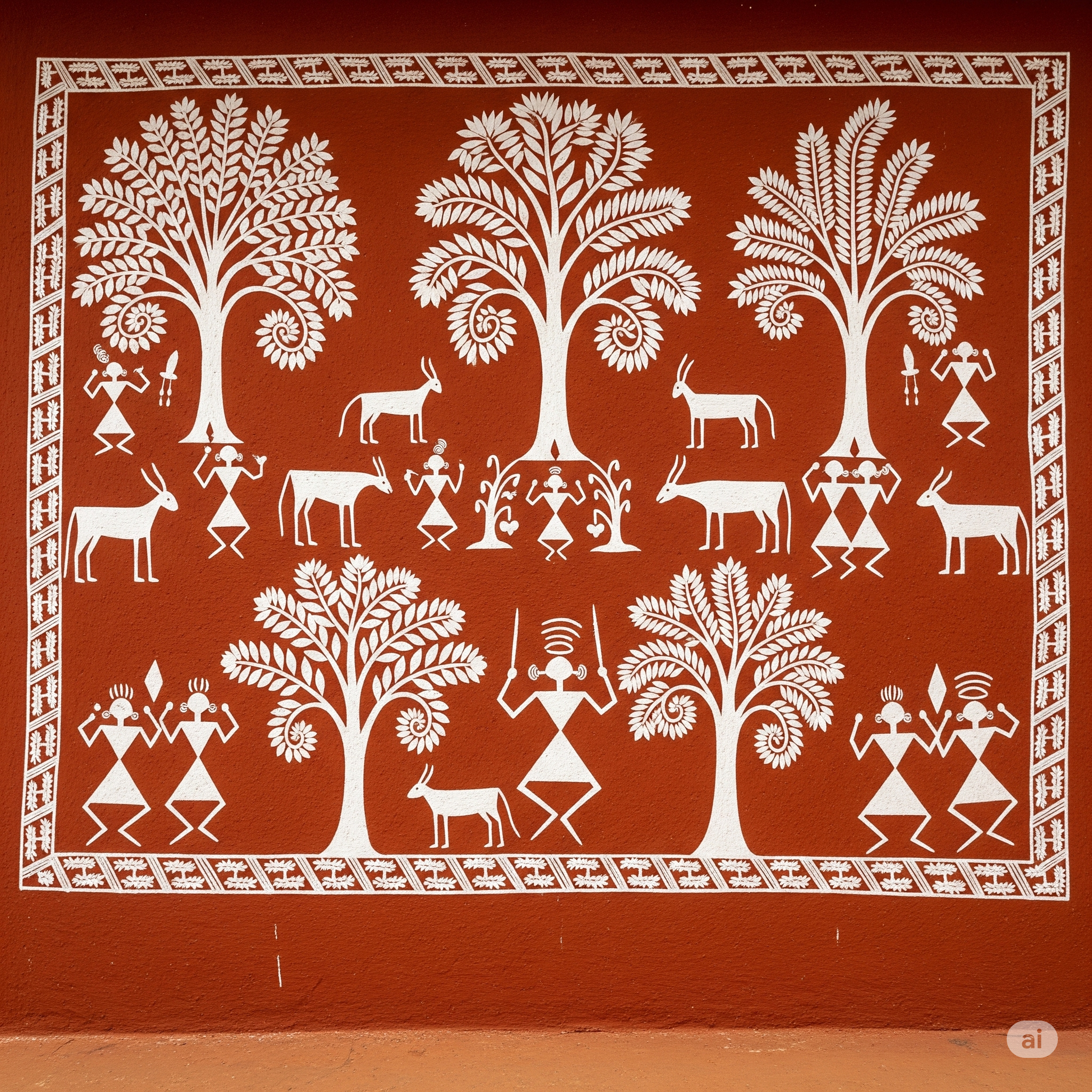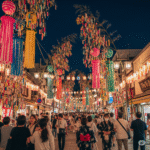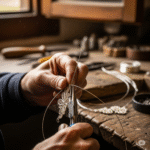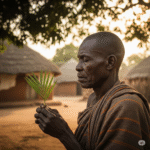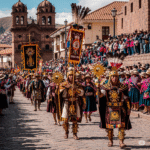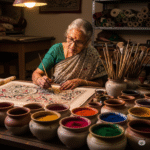Before there were pens or pixels, the Warli tribe of India was telling stories using triangles, circles, and lines. This minimalist style — known as Warli art — is one of India’s oldest and most captivating tribal traditions. It’s not just decorative; it’s deeply symbolic, used for centuries to depict everyday life, rituals, and nature in a strikingly simple visual language.
Where Does Warli Art Come From?
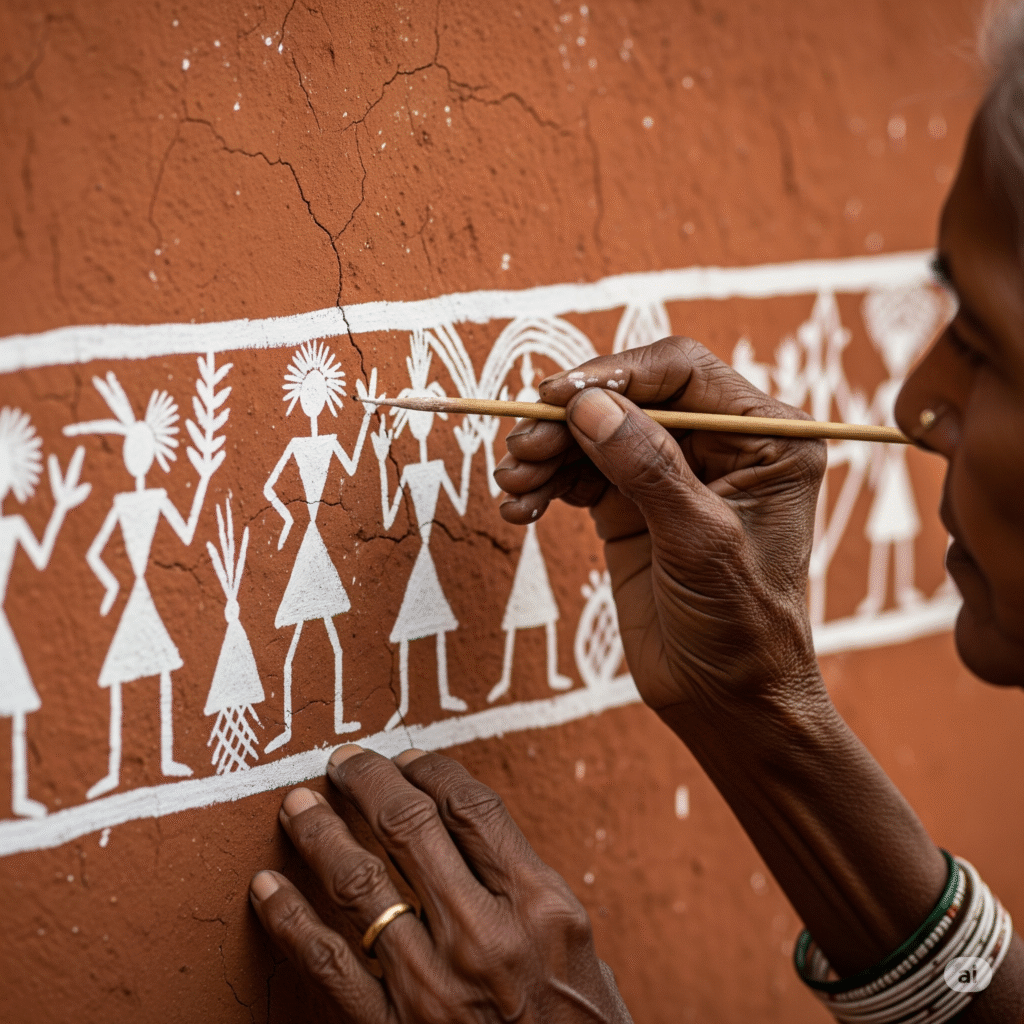
The Warli people live in the Sahyadri hills of Maharashtra, India, primarily in the districts of Palghar and Thane. Though the style dates back to at least the 10th century, it remained largely unknown to the outside world until the 1970s. Today, Warli murals are painted not just on hut walls but also on canvases, clothing, and even subway stations — yet the spirit of the art remains unchanged.
The Warli Visual Language
Warli paintings are made with a white paste (traditionally rice flour and water) on a red or brown background of cow dung and mud. But it’s not the materials that make it unique — it’s the geometry:
- Triangles represent mountains, trees, and humans (with the top and bottom triangles symbolizing balance)
- Circles stand for the sun, moon, or community
- Lines and dots create movement — a flowing river, a dancing couple, or swirling winds
The human and animal figures are typically stylized, often shown in rhythmic repetition to mimic folk dances or daily chores like harvesting, cooking, or celebrating a marriage.
Beyond Decoration: A Ritual Tradition
Warli art isn’t just about beauty — it’s a ritual. Paintings are usually made during festivals, weddings, or harvest season. The goddess Palaghata, who blesses fertility and family, is often honored through these images.
The central motif in many murals is the chauk — a square that represents sacred space. Inside the chauk, you’ll often find the “tarpa dance,” a circular dance with figures holding hands and moving around a musician playing the tarpa (a traditional trumpet-like instrument).
Warli vs. Other Folk Styles
Unlike the colorful vibrancy of Madhubani or Pattachitra, Warli art is monochromatic and minimal. But that simplicity is its power. It reduces life to its essential forms, creating a kind of visual poetry — a reminder that art doesn’t need to be complex to be meaningful.
The style’s raw and earthy character connects it directly to the land, seasons, and rhythms of tribal life.
The Modern Revival
In recent decades, artists like Jivya Soma Mashe helped bring Warli art into the public eye. He innovated by taking it from hut walls to canvas, making it accessible to galleries, museums, and design schools.
Today, you’ll find Warli motifs on everything from sarees and home décor to murals in Indian metros and airports. Brands use it in logos, and activists have adapted it for storytelling in urban protests and environmental campaigns.
A Living Tradition
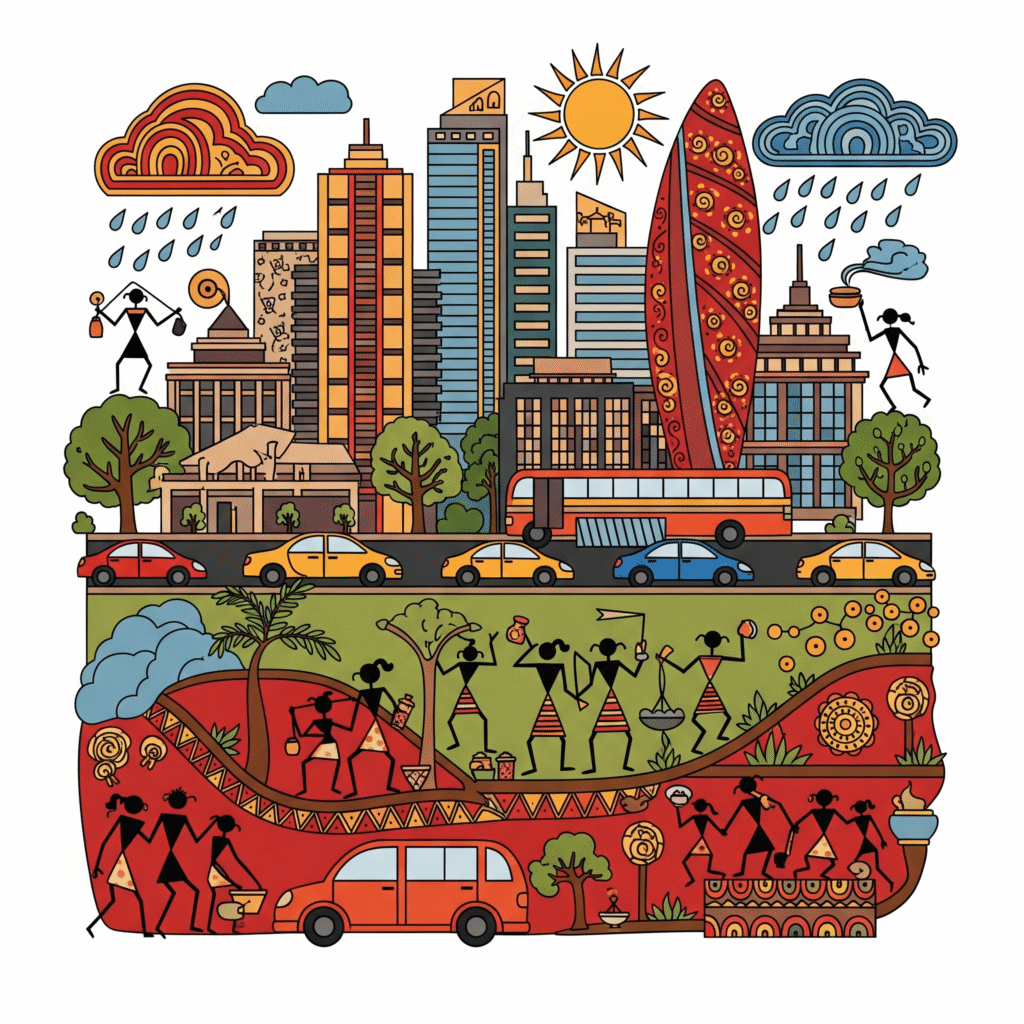
Despite its global popularity, Warli art remains a living tradition practiced by tribal communities. Workshops and cooperative groups in Maharashtra teach young artists not just how to paint, but also the meaning behind the forms.
For the Warli people, these aren’t just patterns – they’re stories, memories, and prayers passed from one generation to the next.
Why It Matters
In a world of digital overload, Warli art reminds us that the most profound expressions often come from the simplest lines. It celebrates community, nature, and harmony — values the modern world desperately needs. And with every triangle and swirl, it whispers an ancient truth: that art, at its heart, is about connection.
